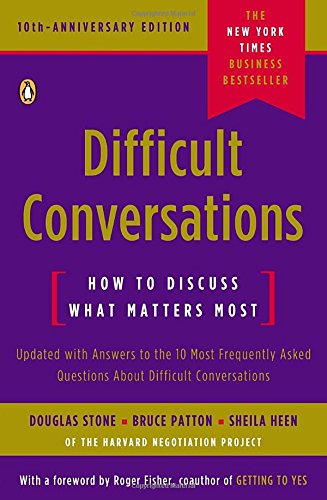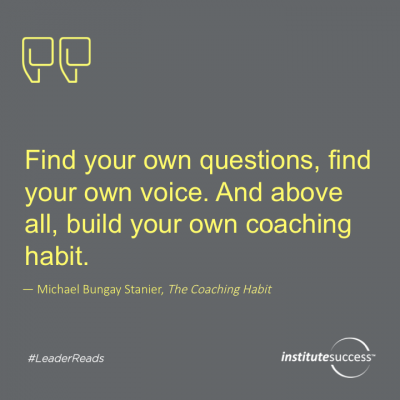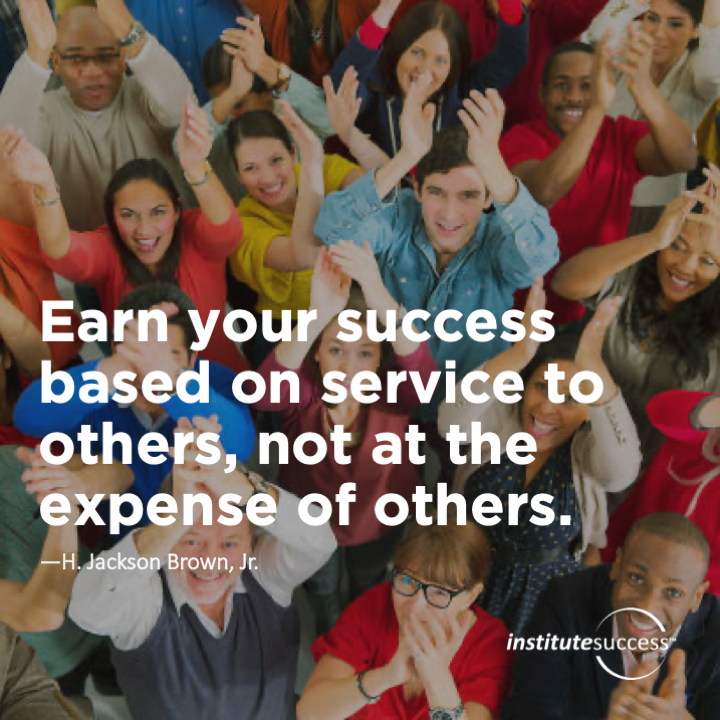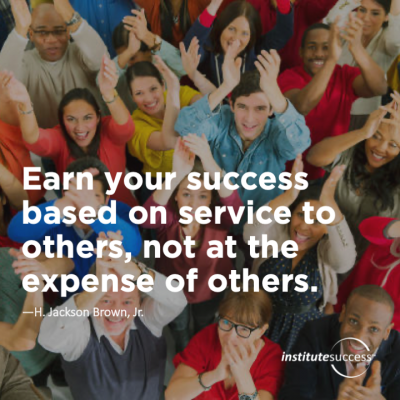Difficult Conversations – How To Discuss What Matters Most – Douglas Stone, Bruce Patton, Sheila Heen
From the team lead who brought forward the Harvard Negotiation Project, Douglas Stone takes the bull by the horns in his celebrated book Difficult Conversations: How to Discuss What Matters Most. Stone observes that difficult conversations appear to be a no-win situation: tackle them, and risk hurting someone or being hurt, or alternatively, leave important issues unresolved and risk the consequences. But what if taking on these tricky moments were an opportunity to strengthen the relationship rather than tear it down?
Stone asserts that this is exactly the opportunity in every difficult conversation. He outlines three mini-conversations inside yourself and with the other person that exist in every difficult conversation:
Conversation #1: What happened
Clearly, you and the other person are not going to see eye to eye hear in the beginning, or you wouldn’t be considering a tough discussion. Stone draws our attention to the critical importance of realizing the limitations of our own perspective about the facts. The chances are, we view the other person as insensitive or callous in some way—but they also feel the same way about us. Realizing that we don’t have a complete view opens the possibility that the other person may have some valid points to make.
Conversation #2: The feelings
It would be impossible to deal with conflict without running headlong into your feelings and those of the other person; this is only natural. These feelings are really what is driving the conversation, Stone says. He encourages us to be candid and honest about how we feel because unexpressed feelings have a funny way of coming out anyway, often in less productive ways.
Conversation #3: The identity
When we run into trouble with the other person, we tend to see it as a reflection on ourselves. This calls into question three aspects of ourselves: Am I competent? Am I a good person? Am I worthy of love? The extent to which we have dealt with these honestly with ourselves beforehand is the extent to which we will be effective in the difficult conversation.
Having pulled back the curtain on the three sub-conversations that are quietly embedded in every difficult conversation, Stone lays out five steps towards a rich and successful conversation:
Prepare by walking through the three conversations.
Sift through what you think happened and how the other person may see it. Understand and acknowledge your emotions and those the other person is likely experiencing. Take time to appreciate the issues at stake and how those affect you both.
Examine your purposes, and decide whether to raise the issue.
Some things aren’t worth bringing up, not because it shouldn’t be addressed, but because the principal person you need to address it with is—yourself. Another person may be involved, but the real issue may lie inside yourself. So consider whether your complaint makes sense outside yourself and whether it could be happily resolved by a behavioral change on your side.
Start from the third story.
As you enter the conversation, don’t do it by starting from your perspective of what happened. The hardest part of any conflict is the beginning, but there is also the most potential to set the course for what follows. Leading off with our version of the story is off-putting, so start off by expressing what a third party may see, someone who would be watching from outside both of your perspectives. Then invite them to sort through the problem together.
Explore their story and yours.
Having lead off with a more impartial view of what happened, get down to the bottom of what the other person sees. Ask lots of questions, truly listen, and show a genuine curiosity. Paraphrase what they tell you to make sure you’re clear, and mirror back to them how the situation must have made them feel. If they begin to wander down a trail of complaining or accusing, rather than reacting in anger, get the train back on track by reframing what they’re trying to say in a more productive way. “So what you’re saying is that I pushed you too far and that you ended up feeling coerced into doing something rather than being given the chance to say no or come up with other ideas. Is that fair? That would be tough to take.”
Problem solve.
Stone has three components here that are vital to the problem solving process: brainstorm about options that are mutually satisfactory, look to standards or precedents outside yourselves if you can’t come up with any good ideas (like things you’ve seen work with others), and talk about how to keep the communication line you’ve created open.
With these practical steps in exploring your own world and the other person’s, you should walk away feeling both better heard and better known, and so will the individual you just talked with. It’s not easy, but difficult conversations are loaded with potential for strengthened relationship.











